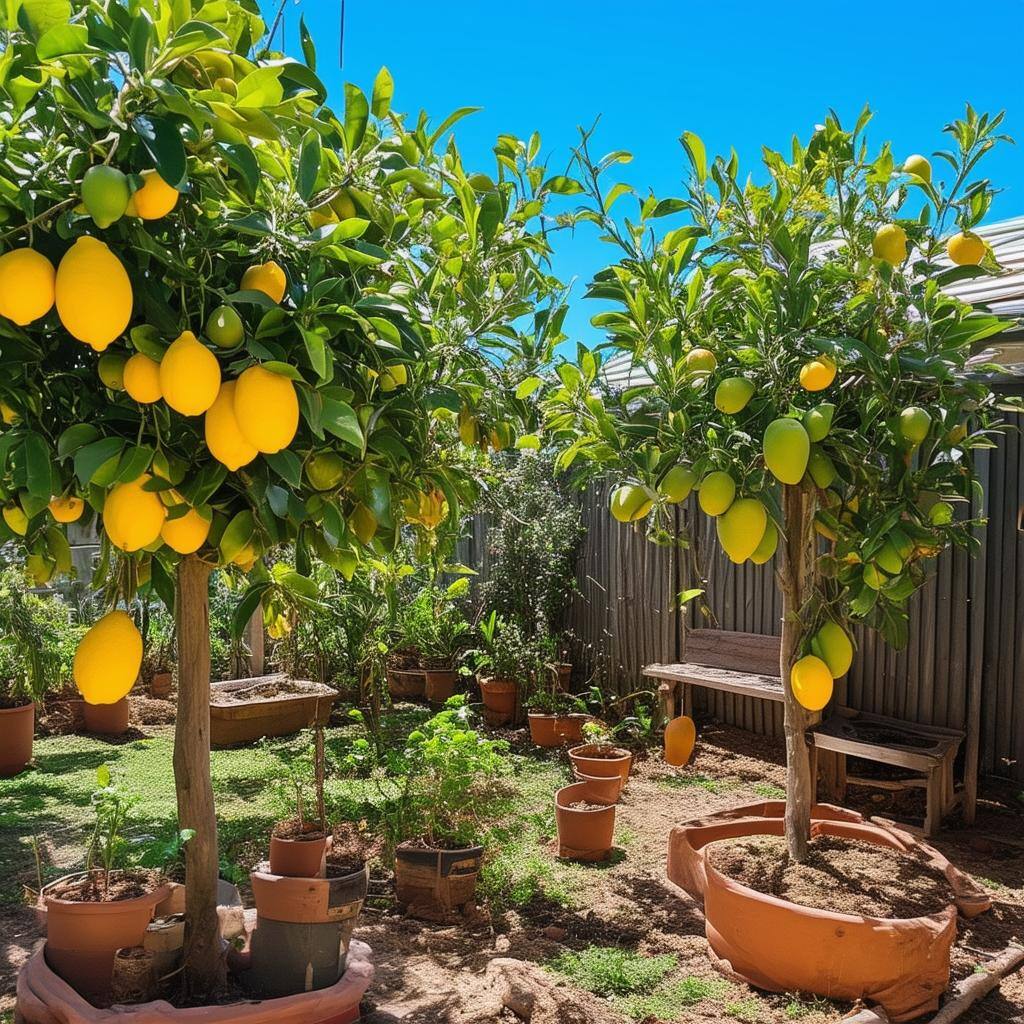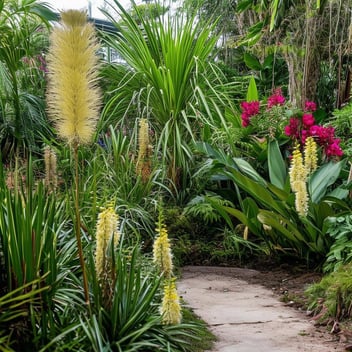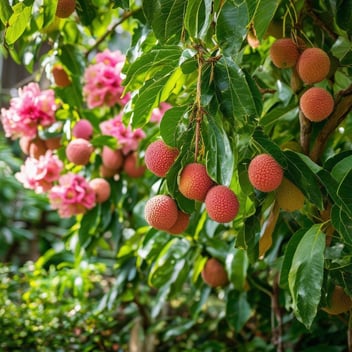How to Propagate Fruit Trees for SEQ Backyards
Introduction
Cultivating fruit trees in your South East Queensland (SEQ) backyard offers a plethora of benefits. Beyond the delight of harvesting fresh, homegrown produce, propagating your own trees fosters a deeper connection to your garden and contributes to local biodiversity. With SEQ's favorable subtropical climate, gardeners have the unique opportunity to propagate a diverse range of fruit trees successfully.
Selecting Suitable Fruit Trees for SEQ
Choosing the right fruit tree species is paramount to successful propagation and cultivation. In SEQ, several fruit trees are well-suited to the climate:
-
Citrus Trees: Lemons, limes, oranges, and mandarins thrive in SEQ's conditions.
-
Tropical Fruits: Lychees, longans, and mangoes are excellent choices for the region.
-
Subtropical Varieties: Figs, pomegranates, and mulberries adapt well to SEQ's environment.
Selecting species that are acclimated to the local climate ensures robust growth and fruitful yields.
Propagation Methods
There are several methods to propagate fruit trees, each with its own set of advantages:
-
Seed Propagation: Growing trees from seeds.
-
Cuttings: Rooting a severed piece of the parent plant.
-
Grafting: Joining a scion of the desired fruit variety onto a compatible rootstock.
-
Air Layering: Inducing roots to form on a branch while it's still attached to the parent tree.
Understanding each method allows gardeners to choose the most appropriate technique for their desired fruit trees.
Seed Propagation
Advantages and Limitations
Propagating fruit trees from seeds is cost-effective and straightforward. However, it's important to note that trees grown from seeds may not produce fruit identical to the parent due to genetic variability. Additionally, seed-grown trees often take longer to bear fruit.
Step-by-Step Guide
-
Seed Selection: Choose seeds from fully ripened fruits of locally grown varieties to ensure climate adaptability.
-
Cleaning: Remove any fruit pulp and rinse the seeds thoroughly.
-
Pre-Treatment: Some seeds require stratification (a period of cold treatment) or scarification (scratching the seed coat) to enhance germination.
-
Planting: Sow seeds in a well-draining potting mix, covering them lightly with soil.
-
Germination: Maintain consistent moisture and place the container in a warm, sunny location.
-
Transplanting: Once seedlings have developed several true leaves and are sturdy enough, they can be transplanted into larger pots or directly into the garden.
Propagation from Cuttings
Suitable Species
Certain fruit trees, such as figs and mulberries, propagate well from cuttings. This method ensures the new plant is genetically identical to the parent, preserving desirable fruit characteristics.
Techniques and Tips
-
Cutting Selection: Choose healthy, disease-free branches that are semi-hardwood (neither too young nor too old).
-
Cutting Preparation: Cut a 15-20 cm section, ensuring it has several nodes. Remove leaves from the lower half.
-
Rooting Hormone: Dip the cut end into a rooting hormone to encourage root development.
-
Planting: Insert the cutting into a pot filled with a sterile, well-draining medium like perlite or sand.
-
Environment: Maintain high humidity around the cutting by covering it with a plastic dome or placing it in a propagator.
-
Root Development: Keep the medium moist and place the cutting in indirect sunlight. Roots typically develop in a few weeks.
Grafting Techniques
Grafting is a venerable horticultural practice that involves uniting a scion (a desired fruit-bearing branch) with a compatible rootstock, resulting in a composite plant that combines the strengths of both components. This method is particularly advantageous for propagating fruit trees in SEQ, as it allows gardeners to cultivate varieties that may not root easily from cuttings or adapt well to local soil conditions.
Overview of Grafting Methods
Several grafting techniques are suitable for fruit trees:
-
Cleft Grafting: Ideal for joining a scion to a larger rootstock branch, commonly used for top-working older trees.
-
Whip and Tongue Grafting: Employed when the scion and rootstock are of similar diameter, providing a strong union and high success rate.
-
Bark Grafting: Useful when the rootstock is significantly larger than the scion, often applied in rejuvenating mature trees.
Benefits of Grafting for Fruit Trees in SEQ
Grafting offers several benefits:
-
Disease Resistance: Utilizing disease-resistant rootstocks can enhance the overall resilience of the tree.
-
Early Fruiting: Grafted trees often bear fruit sooner than those propagated from seeds.
-
Space Efficiency: Multiple varieties can be grafted onto a single rootstock, allowing diverse fruit production in limited spaces.
Air Layering
Air layering, also known as marcotting, is a propagation technique that induces root formation on a branch while it remains attached to the parent plant. This method is particularly effective for species that are difficult to root from cuttings.
Explanation of the Air Layering Process
The process involves selecting a healthy branch, making a targeted wound, applying a rooting medium, and wrapping it to maintain moisture. Over time, roots develop at the site of the wound, after which the new plant can be detached and potted.
Best Practices for SEQ Gardeners
-
Timing: Perform air layering during the active growing season, typically in spring or early summer.
-
Moisture Maintenance: Ensure the rooting medium remains consistently moist but not waterlogged.
-
Protection: Shield the layered section from direct sunlight to prevent overheating.
Caring for Newly Propagated Trees
Once propagation is successful, it's crucial to provide appropriate care to ensure the young trees establish well:
-
Acclimatization: Gradually introduce the new plants to outdoor conditions, starting with shaded areas and slowly increasing exposure to sunlight.
-
Watering: Maintain consistent soil moisture, avoiding both drought stress and waterlogging.
-
Nutrient Management: Apply a balanced, slow-release fertilizer to support healthy growth.
Common Challenges and Solutions
Propagation can present challenges, but with careful attention, these can be mitigated:
-
Poor Root Development: Ensure proper technique and use of rooting hormones to encourage root formation.
-
Disease Incidence: Maintain hygiene during propagation and monitor for signs of disease, treating promptly if issues arise.
-
Environmental Stress: Protect young plants from extreme weather conditions, such as excessive heat or heavy rainfall.
Conclusion
Propagating fruit trees in SEQ backyards is a rewarding endeavor that combines horticultural skill with the joy of cultivating homegrown produce. By understanding and applying appropriate propagation techniques—be it seed propagation, cuttings, grafting, or air layering—gardeners can enhance their landscapes with a diverse array of fruit-bearing trees. With patience and care, these efforts will yield bountiful harvests and contribute to the rich tapestry of SEQ's suburban orchards.




